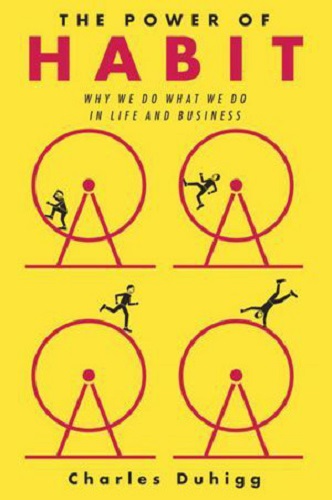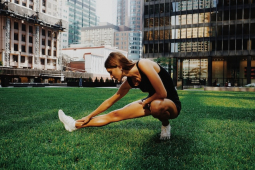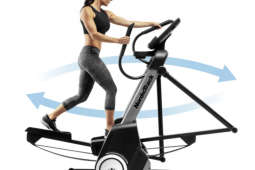Book Review The Power of Habit

How Rethinking Habits Applies to Keeping Fit
When I’m not running, working out or running Fitness Review – I love to read. The latest book on my Kindle was ‘The Power of Habit’ by Charles Duhigg. There were some thought-provoking ideas. Many of these apply directly to fitness, especially the struggles we all face from time to time when it comes to keeping up motivation to get started.
This page is part review of the book – part teasing out the key elements of good habit formation.
I recommend this book. Each part uses stories and real-life examples to explain the psychology / neural basis for habits. This makes it easy reading compared to many science type books. Examples come from alcoholics, Olympic swimmers, gamblers and even sleepwalkers.

Habits Have a Neural Base and Big Advantage
First, the book defines what a habit is. There are a lot of examples about how we do things automatically, without thinking. Studies with Monkeys show that providing the stimulus (for a level press) creates the same brain patterns as receiving the reward once they are paired. This is important. If the reward does not appear, the brain goes into craving-mode… that can be uncomfortable. If you have ever seen a cake in the fridge (kicking off the neural equivalent of a sugar rush), and then desperately tried not to eat it, you will be able to relate to this!
The advantage of habits is that our brains do not get overloaded. If you had to make every tiny decision, well, life would quickly get impossible to manage. There are evolutionary advantages too. Our ancestors would have jumped from suspected lions automatically. Those who hung around deciding what to do were a lot less likely to become our ancestors…
Habits become hard wired into the brain, which explains why they can be so hard to break.
 Three Parts to Each Habit
Three Parts to Each Habit
When it comes to changing habits, research piles up showing that will power is not the way to go.
Forcing yourself to work out, or not eat that snack works only for a while.
Instead, breaking habits into three parts, then swapping out the middle one has been shown to work best. The parts are the stimulus (what triggers the habit), the behaviour and the reward. The best part to swap is the behaviour.
An example was an obsessive nail biter. It was getting to the reward which unlocked the solution. This was a sense of completeness / accomplishment. By swapping out writing down the desire to bite on a card, the (destructive) nail biting behaviour was replaced by a better one.
More serious examples concern people with drinking problems. The trigger was varied, though escape from problems and the social / group aspects were the reward. What AA does is to replace the social with group meetings, and make open discussion of problems the basis. This gives similar rewards. Again, the ‘behaviour’ part of the loop is what gets replaced.
Stress Is a Habit Killer
At times of stress, newly formed habits often crumble. Examples include that alcoholics often hit the booze again after a death or illness in the family. There are plenty more examples given in the book.
What makes the biggest difference to keeping up newly formed habits during times of stress? Social support. Those with friends, family and other groups were able to ride out those situations much better than average.
To give a fitness example, if you are losing weight with a friend or group – you’ll bounce back from moments of weakness much faster. Even sharing your goals with a mentor or loved one makes a significant difference.
 How the Power of Habit Can Help You Get (or Stay) Fit?
How the Power of Habit Can Help You Get (or Stay) Fit?
You’ll need the motivation to get started of course – though the ideas in this book will certainly help.
This would be my main take-aways;
- Identify your current habits. When you get home from work do you crash on the TV with a snack, what is the reward you feel for this? It could be relaxation, or escape from stresses of work for example.
- Start small, and insert a different behaviour at that point. Following this example, put on your gym gear, do a couple of push-ups, whatever suits you. Give yourself a reward for doing this.
- Work up from there… make the new behaviour the natural way to your reward.
- Buddy Up: Share your goals, share your progress and if possible, work at it alongside someone making similar changes.
- Identify the next bad habit and do it again.
A final concept to share from the book – cornerstone habits. These are simple changes, which can cascade into bigger wins.
The good news here (and I’m sure many readers of Fitness Review will already know this) – exercise is one of (if not ‘the’) most important one.
Summing up
Go read this book, it is an entertaining read, and helping you change just one bad habit makes it worth the cover price many times over!
You can grab it over on this amazon.co.uk page
More Popular Pages:
- Shoe Dog Book Review (bio of Nike’s founder)
- Best Running App (popular apps compared)
- Step Counters Compared
- Outdoor Family Sports for Summer
- Tips for Better Rowing Machine Use
- Best Selling Massage Gun from TaoTronics


